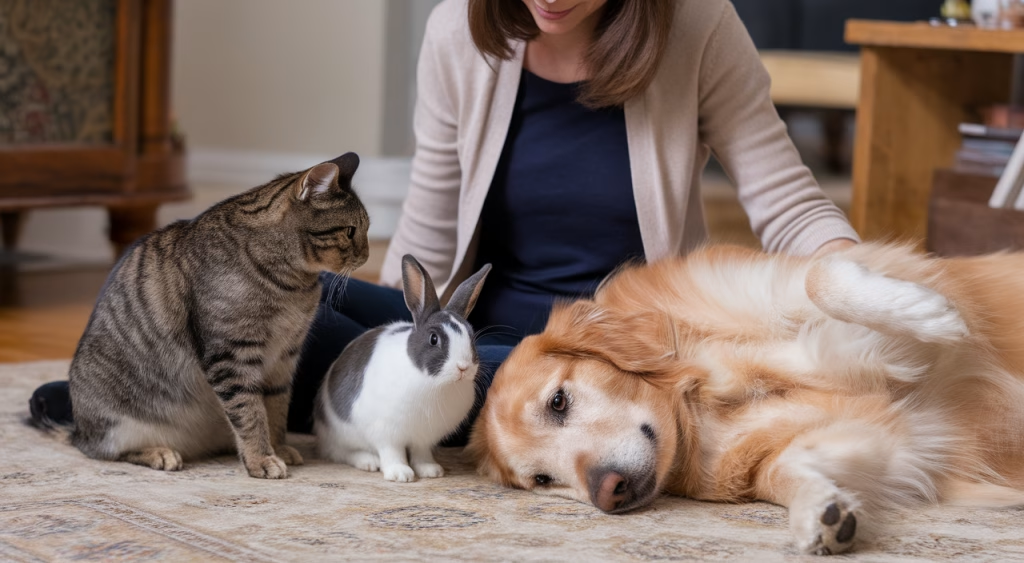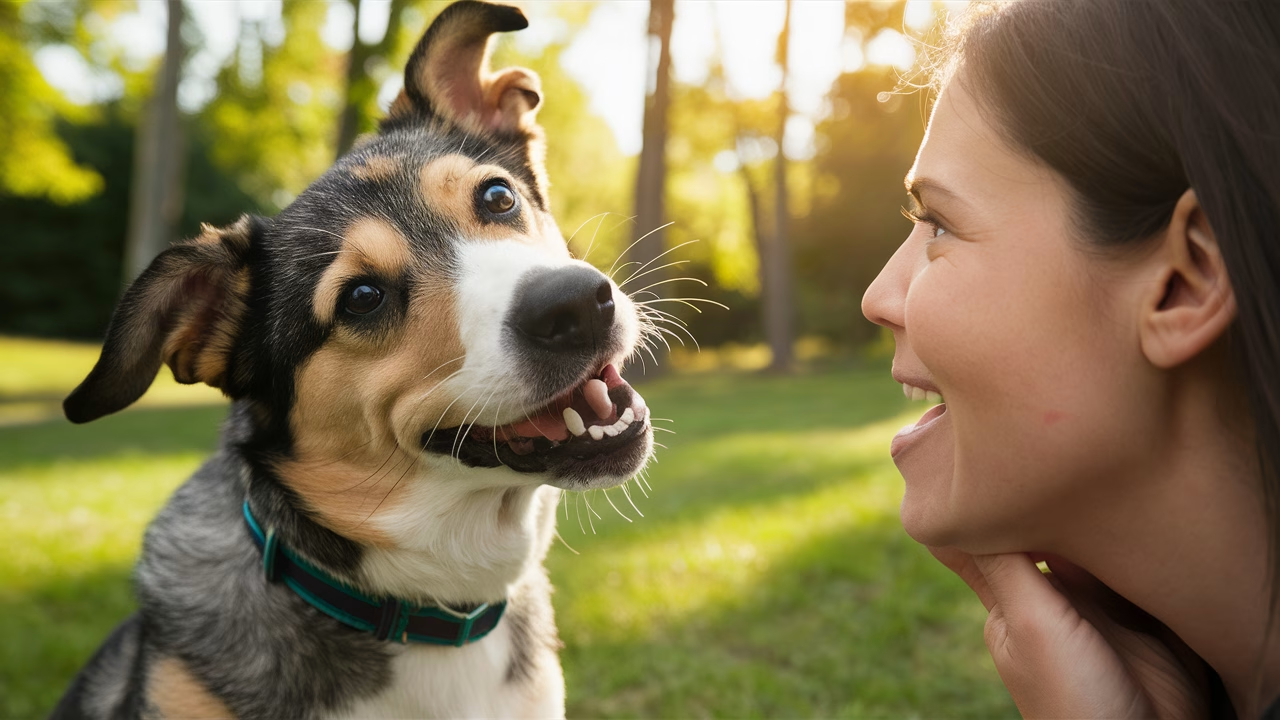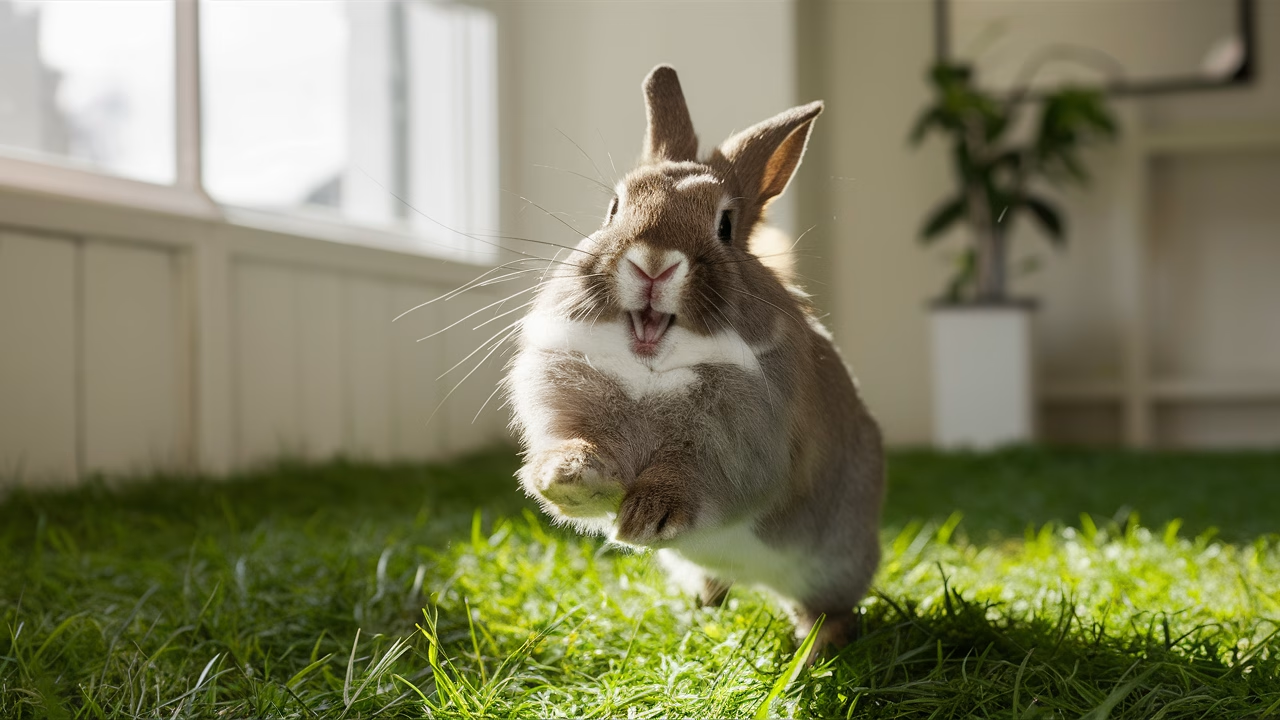How Does Pet Bonding Actually Work Across Different Animals?
Pet bonding isn’t some mysterious, magical power exclusive to natural animal lovers. It’s a science-backed process grounded in consistent, loving behaviors—and it works across every shape, size, and species of domestic animals. The secret? Understanding how animals interpret our actions, paired with five intentional minutes of connection each day.
- Key Takeaways:
- Pet bonding is about consistent, emotionally attuned interactions, not the amount of time you spend
- Dogs, cats, birds, rabbits—even fish—use unique signals to express affection and trust
- 5-minute bonding rituals, like eye contact or gentle touch, can create lasting emotional security
- Hilarious animal behaviors (like bunny binkies and dog playbows) are actually signs you’re doing it right
- Backed by animal behavior science, pet bonding improves both pet and human well-being
Understanding Animal Behavior for Pet Bonding
Bonding with pets starts by understanding animal behavior—how they think, feel, and express empathy across species. Each animal has its own social language, and once you begin decoding it, those random tail wags and head tilts start telling a powerful story.
Let’s break down a few crucial animal facts:
- Cats: Cats see you as a giant kitten. The gift of a dead mouse is a well-meaning lesson in survival skills.
- Dogs: Your pup can read facial expressions using the same brain regions we use to decode emotions in others.
- Birds: That bizarre regurgitation behavior? It’s not gross—it’s affection (and no, you shouldn’t return the favor).
- Rabbits: That jumpy, twisty move called a binky is their version of joyful applause.
By tapping into these species-specific cues, you begin to mirror their body language, respond in ways they understand, and earn their trust from the inside out.
The Art of Communicating with Your Pets
Ever caught yourself talking to your parrot like they’re a coworker, or slow-blinking at your cat with cautious optimism? You’re not just imagining the results—you’re fluently speaking their language. Communication is the cornerstone of bonding with pets. Here’s how common domestic animals interpret our signals:
| Pet | Communication Style | Best Human Response |
|---|---|---|
| Dog | Facial expression, playbows, vocal tone | Mirror expressions, vary vocal pitch |
| Cat | Slow blinks, tail flicks, headbutts | Slow blink back, gentle strokes |
| Bird | Head bobbing, mimic sounds | Whistle patterns, nod back |
| Rabbit | Neutral body positioning, binkies | Stay low, offer treats calmly |
| Fish | Swimming patterns, color changes | Consistent voice tones, feed same spot |
These aren’t cute quirks—they’re cognitive patterns geared around emotional synchronization. When your dog tilts his head after you say “Who’s a good boy?”, he’s not just confused; he’s deeply engaged in reading your social cues. Keep practicing, and your pet will start reflecting your emotions like a fuzzy mirror.
Building Trust and Connection through Daily Interactions
Here’s the golden nugget: pet bonding doesn’t require hours of effort—just consistent, mindful presence. The key is to build routines of trust. You don’t need to be perfect; you just need to be predictable.
Here are species-specific suggestions for how to bond with your pet through simple interactions:
- Dogs: Spend 5 minutes a day practicing simple commands with positive reinforcement. They’ll associate learning with love.
- Cats: Use a laser pointer or cat wand for light play, then slow blink to wind down. This taps into their hunter-relax cycle.
- Birds: Set a daily song time where you both whistle or click to each other. Birds thrive on vocal routines.
- Rabbits: Sit on the floor, remain still, offer a leafy green. When they hop near you, they’re voting yes with their feet.
- Fish: Say hello as you feed them; hover your finger on the glass. Soon, they’ll race over like underwater puppies.
Make these routines sacred. Your pet begins to anticipate them, creating emotional structure and a sense of safety that deepens your bond.
Hilarious Animal Behaviors that Strengthen Bonds
One of the joys of pet ownership? Watching the weird, wild, and totally unpredictable behaviors that signal deep connection. These moments go beyond logic—they’re animal kingdom comedy gifts wrapped in trust.
Examples of Funny Yet Intimate Behaviors:
- Rabbit Binkies: Think: bunny flips with flair—their way of saying “Life is good, and so are you.”
- Guinea Pig Popcorning: Little jumps of joy that look like they’re dodging invisible raindrops. A+ for excitement.
- Dog Playbows: The adorable front-leg stretch that says “Let’s go!” and “You’re my favorite teammate.”
- Bird Regurgitation: Not as gross as it sounds (if you’re a bird). It’s their love language—for real.
- Cat Headbutts and Slow Blinks: Technically called bunting. It’s feline for “You’re in my crew.”
By recognizing and responding to these behaviors, you’re sending a clear message: “I see you, I speak your language, and I’m here.” This understanding transforms simple pet interactions into deep emotional connections.
How Parrotfish Poop Creates White Sand Beaches: The Secret Behind Tropical Paradise
The Emotional Benefits of Bonding with Pets
Let’s flip the script. As much as our pets benefit from bonding, we do too—and in profound ways backed by science and experience. Studies show that meaningful pet interactions lower cortisol (stress hormone) and increase oxytocin (the bonding hormone) in humans.
Top Emotional Gains for Pet Owners
| Benefit | How Pet Bonding Helps |
|---|---|
| Stress Reduction | Promotes calm through routine, touch, and comforting presence |
| Mental Health | Counteracts loneliness and supports emotional regulation |
| Purpose & Structure | Daily pet care builds routine and accountability |
| Joyful Distraction | Funny behaviors and interaction bring laughter and relief |
When your cat trusts you enough to close its eyes, or your dog mirrors your sad expression with a concerned nuzzle, that’s nature reminding you: you’re viewed as part of their pack, pride, or pod. And that feels pretty incredible.
Comparison: 5-Minute Daily Bonding Activities by Animal Type
| Pet | Best Interaction | Signs of Success |
|---|---|---|
| Dog | Facial mimicry, short training | Tail wag, eye contact, quick learning |
| Cat | Slow blink, light play | Purring, bunting, soft gaze |
| Bird | Whistle calling, perch play | Imitation, relaxed feathers |
| Rabbit | Quiet time + treats | Binkies, relaxed posture |
| Fish | Feeding & gentle voice | Excited swimming, following finger |
Frequently Asked Questions
How can I bond with my pet if I have a busy schedule?
Start with five minutes of consistent, distraction-free interaction. Whether it’s a cuddle, quick play session, or shared quiet time, consistency is more important than duration.
Is it possible to bond with low-interaction pets like fish or reptiles?
Absolutely. Fish recognize feeding patterns and will swim toward your voice. Reptiles like bearded dragons even show distinct behavior changes when their favorite human is nearby.
Does eye contact help pet bonding?
Yes, particularly for dogs and cats. Dogs process human faces similarly to people, and cats see slow blinking as a sign of trust.
What’s the best bonding activity for shy pets?
For shy animals, calm presence and non-invasive treats work best. Sit nearby, speak softly, and wait for them to initiate contact.
Why does my cat bring me food or toys?
This is your cat’s way of caring for you—teaching or sharing. They see you as a family member needing nurturing or entertainment.
What’s a popcorning guinea pig and how do I encourage it?
Popcorning is when a guinea pig jumps straight up in the air from excitement. Gentle interaction and healthy treats encourage these joyful spasms.
How do I know if my pet trusts me?
Signs include relaxed body language, seeking proximity, and mirroring your behavior. Each species signals trust in its own unique (and often hilarious) way.





